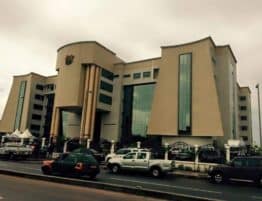
The Ghana Civil Aviation Authority (GCAA) has published draft directives on the ownership and use of drones in Ghana. The draft is entitled GHANA CIVIL AVIATION (SAFETY) DIRECTIVES, 2016 PART 28-REMOTELY PILOTED AIRCRAFT SYSTEMS. Under the Directives, drones come under what has been termed, Remotely Piloted Aircraft Systems (RPAS). For the purpose of this article, I will stick to the use of the word ‘drone’.
In summary, the purpose of the Directives is to ensure the safe integration of drones into Ghana’s airspace by supplementing the provisions of the Ghana Civil Aviation (Safety) Regulations, 2011, L.I. 2000.
Below is a summary of what to expect from Ghana’s upcoming drone Directives.
- The Directives apply also to model aircrafts
- There is no clear distinction between recreational use and commercial use
- You will need the written approval of GCAA to import a drone into Ghana
- You cannot operate a drone without having been registered with GCAA
- You cannot operate a drone without having obtained a permit from GCAA
- You will need a Remote Pilot License (RPL) before you can fly a drone
- Your valid RPL must be in your possession before you can operate your drone
- You cannot fly your drone 400 feet above ground level without prior notification and approval by the Air Traffic Services
- You cannot fly your drone out of your line of sight
- You must be at least 18 years old before you can operate a drone
- You cannot operate a drone without a medical class III certificate
- You RPL is valid for 5 years renewable yearly upon proof of a valid medical class III certificate
- You cannot operate a drone without an RPAS Operators Certificate issued by GCAA
- You cannot operate a drone if you do not have a certificate of airworthiness issued, approved or validated by GCAA
- You cannot operate a drone unless the operational and emergency equipment necessary for the intended flight are serviceable
- You cannot operate a drone without an approved safety management system
- Your drone must be marked with the Ghana flag and denoted with a registration number preceded by 9G
- Except with the permission of GCAA your drone cannot be flown over congested cities, towns or settlements or over an open air assembly of persons
- You are permitted to fly your drone indoors – A building with no roof is considered to be outdoors
- In flying outdoors, you are not permitted to fly your drone within a radius of 30 meters from buildings, vehicles and people
- You cannot fly at night without special authorization from GCAA
- You cannot fly your drone in aerodromes
- You cannot fly your drone within a radius of 10km of an ILS equipped aerodrome
- Drones are classified into small, medium and large RPAS
- Unauthorised use of drones could attract both civil and criminal liabilities
In my opinion, there must be a clear distinction between recreational and commercial use as it would be much more practical that way. It would also conform to international practice. Following a stakeholders meeting held on 5th July, 2016 the GCAA has agreed to consider some of the suggestions made and to effect the necessary amendments. One of the suggestions I made was to insert the words “not under the control of the RPAS Operator” at the end of the Directive prohibiting flying within a radius of 30 meters from buildings, vehicles and people. That Directive should read as follows “No RPAS Operator shall fly an RPAS within a radius of 30 meters from buildings, vehicles or people not under the control of the RPAS Operator.” I believe the inclusion of those words would permit the use of drones in one’s backyard.
Author: Nana Yaw Ntrakwah
Dated in Accra the 4th day of July, 2016








